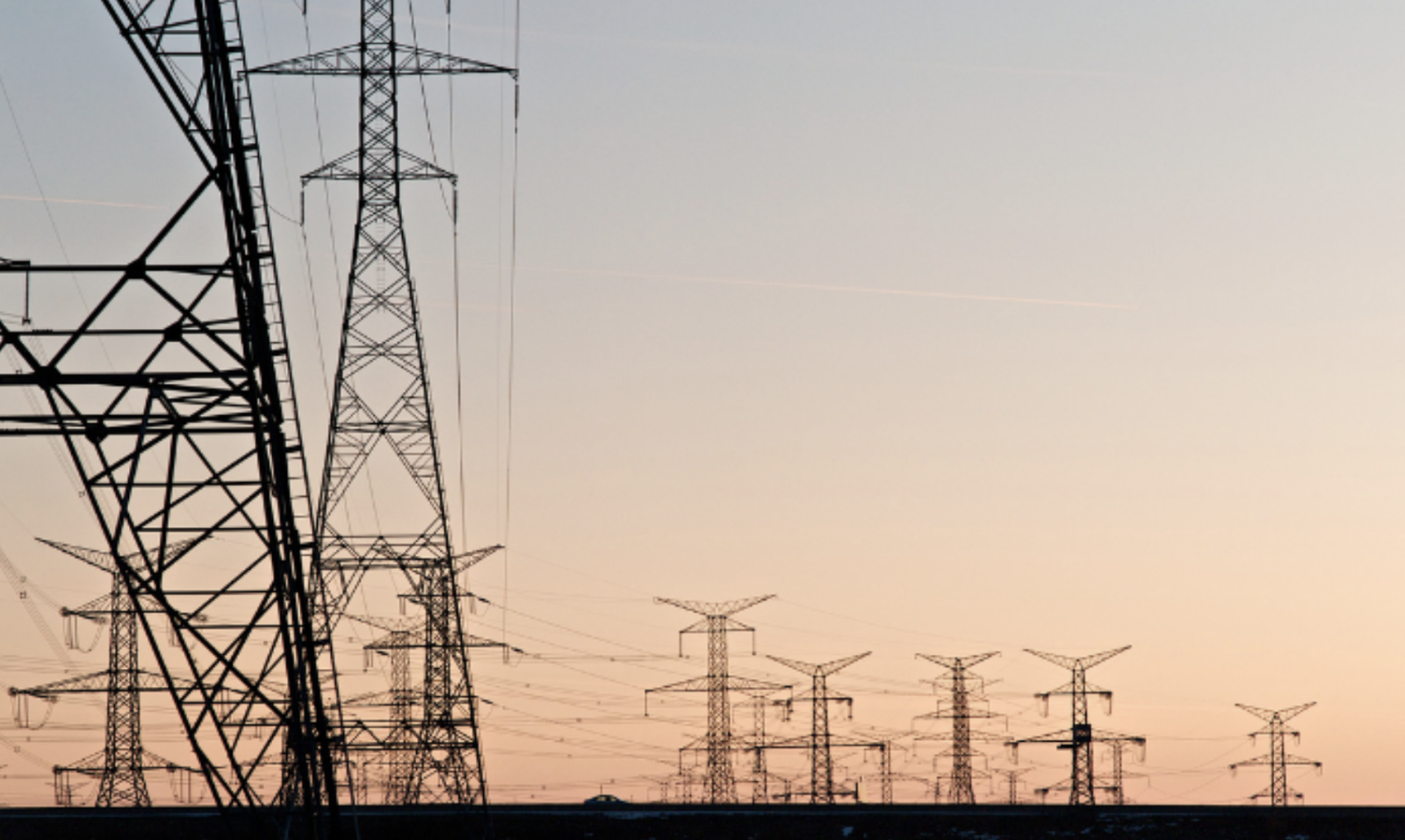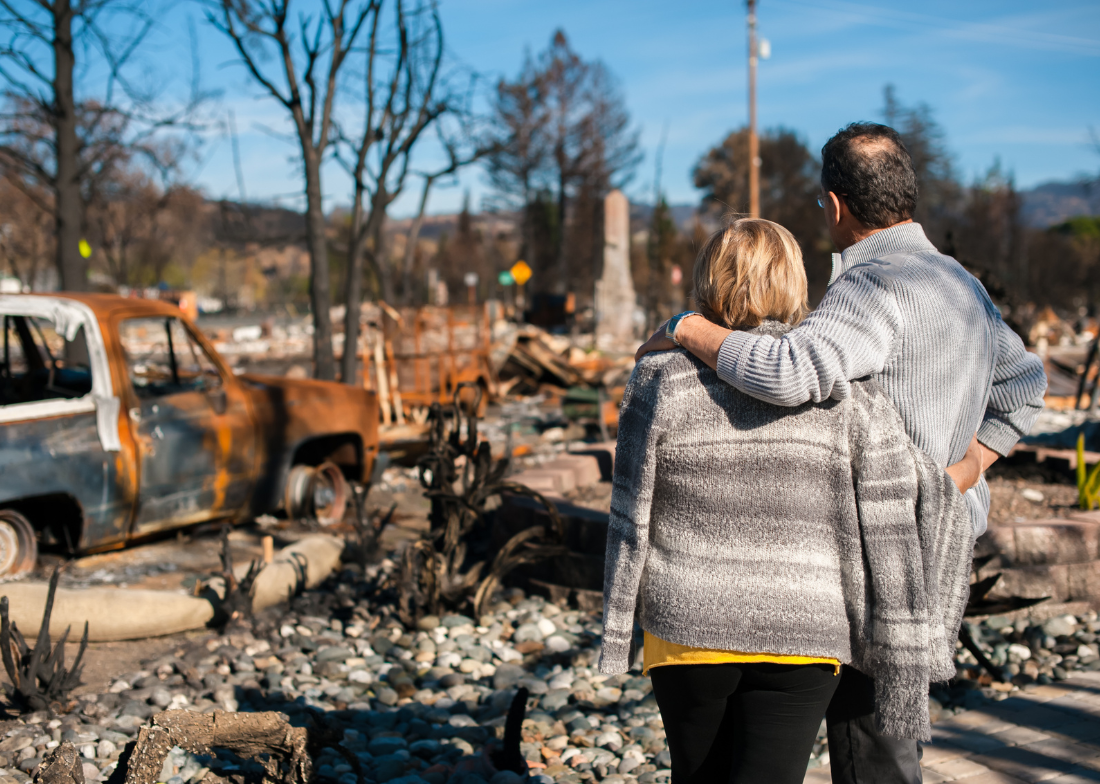The Power Grid and Climate Change 101
|
September 30, 2022

The privilege of having electricity is probably something many of us don’t think about until we experience a blackout. But as soon as a community experiences a power outage, everyone scrambles to purchase canned food, insulate heat or air conditioning, and replace the batteries in flashlights. Unfortunately, without major changes to the United States (U.S.) power grid, the increasingly intense effects of climate change could make electricity disruptions far more common.
What is the power grid?
A power grid is a series of interconnected electrical networks that transports power from producers to consumers.
According to the U.S. Energy Information Administration (EIA), fossil fuels generate roughly 60% of electricity today, with nuclear power and renewable energy evenly splitting the remaining 40%. Thousands of power plants across the country create this energy, use transmission lines to distribute power across various communities, and bring energy into our homes.
And here’s a quick history lesson: the U.S. power grid actually goes all the way back to 1882, when inventor Thomas Edison put his finishing touches on the first power plant in Manhattan. Although the current power grid has been updated and expanded to provide power to the entire country, the basic structure remains the same 140 years later.
Power grids can be publicly or privately owned, which can affect how much regulation each power plant experiences. A lack of regulation, typically more common with privately owned plants, can lead to outdated technology that causes major problems. For example, the privately owned power grid in Texas caused disaster in 2021 when three extreme winter storms swept through the state. The poorly constructed grid failed, resulting in 4.5 million homes losing power, many for several days.
The Texas Power Crisis exemplified the key issue with the U.S. power grid: as climate change worsens, the number of extreme weather events that threaten the power grid will only increase.
How Does Climate Change Affect the Power Grid?
Combine an outdated power grid with extreme weather and you’ve got a problem. Climate change can affect the power grid in many ways, but here are some of the most dire ramifications.
Increased Blackouts
Extreme weather is the number one cause of blackouts in the U.S. Storms can tear down power lines, intense cold or heat can cause power grids to malfunction, snow can weigh down trees and cause them to fall on power lines, and flooding can overwhelm power plants.
Today, we are already experiencing extreme weather events because of climate change. Stronger hurricanes, like Hurricane Fiona and Hurricane Ian, higher temperatures in the summer and lower temperatures in the winter, intense snow storms, and more are just a few of the many symptoms of the changing climate.
Without modernizing the power grid, weather-related blackouts will likely last longer and occur more frequently. This has been the story in areas of the country affected by climate-fueled events, such as Texas, Puerto Rico, Florida, and California.
Decreased Efficiency
The strain on the power grid because of extreme weather will also make energy production even less efficient. In the past, engineers have designed them to only be capable of handling certain types of weather, typically whatever is most common in the region. However, as climate change brings unusual weather to every region in the country, power grids are proving unable to keep up.
Although decreased efficiency may not necessarily lead to outages, it can make energy sources far more unreliable than they have been previously. Additionally, power plants may demand even more resources to function at the same capacity. In some severe situations, including droughts or increased water temperatures, some power grids have to shut down completely.
Economic Consequences
The burden of climate change on the power grid won’t just cause widespread outages and unreliable energy — it’ll also cost money. A lot of it. According to a 2013 report on U.S. grid resiliency, failing to strengthen the power grid could result in $25 billion to $75 billion economic damage every year.
While modernizing the power grid and transitioning to more reliable sources of energy may have upfront costs, the burden of repairing broken grids, bailing out utility companies, and paying other huge costs to restore power to areas affected by climate change is far more expensive.
Climate Injustice
Communities of color and low-income communities are the most likely to feel the brunt of power grid failures. For example, during the 2021 Texas Power Crisis, low-income Black and Hispanic communities dealt with the worst of the consequences. While wealthier families shared power sources with essential buildings like hospitals (which are more common in high-income neighborhoods) or retreated to hotels, low-income communities had to survive the freezing temperatures on their own.
The additional strain of the pandemic and economic turmoil also made it difficult for families to save for emergencies, whether to replace food spoiled in the refrigerator due to a power outage or to refill their gas tanks to escape an impending storm.
A long-history of environmental racism, in which marginalized communities often face disproportionate consequences of pollution and climate change, has also placed people of color in more vulnerable regions. Oftentimes, outdated power grids generate energy for these regions.
How Renewable Energy Sources Can Help
Don’t worry: we aren’t looking at a hopeless future without electricity. There are solutions to the national power grid crisis, namely investing in renewable energy sources (such as wind and solar power).
Although disinformation campaigns have attempted to discredit the reliability and cost-effectiveness of renewable energy, these clean energy sources are one of the best answers to the questions surrounding the power grid. According to this 2021 study from Dartmouth, incorporating renewable energy sources increases the power grid’s overall resilience in the face of extreme weather.
After Hurricane Fiona caused widespread outages in Puerto Rico, homes powered by solar energy had no trouble getting their electricity back — days before others. Investing in renewable energy will not only conserve energy and decrease costs, but it also has the potential to save lives.
–
Unlinked Sources:
Join our Youth Action Network
More Blog Posts
Driving India towards self sufficiency and freedom from oil
India can shield itself from oil-price shocks and global pressure over Russian barrels by leaning harder into two strengths it …
Read More
Unnatural, Not Unprecedented
For two weeks, residents of Southern California endured a waking nightmare. Parents raced against time – hurrying down the driveway …
Read MoreCrafting a Vision for the Future: My Experience at LCOY USA 2024
Dry and sunny Tempe, Arizona where temperatures have been over 100 F for 113 consecutive days, delegates gathered to attend …
Read More